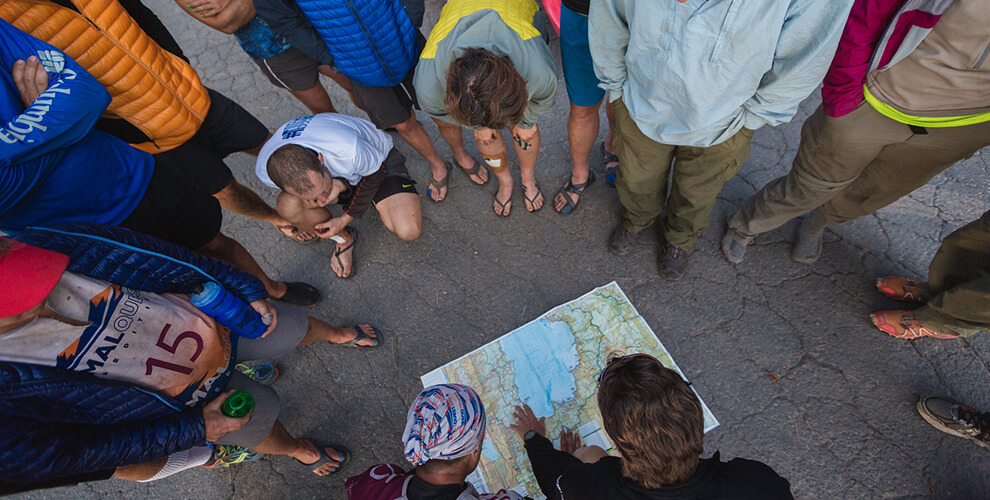Resources
Support Crews

At the most basic level, a support crew moves the team equipment and food around the course so that it is in place before the team arrives. However, a great support crew will do this and a whole lot more; can make transitions fast, efficient and a moral booster for the competitors."
PQ Pursuit Support Crews

PQ Pursuit competitors are required to bring a support crew. The support crew is there to assist the team in the build up, for pre-race organization, strategy, navigational advice, map preparation, support during the event and in the aftermath. The support crew will organize, pack, unpack and transport race equipment. They will almost certainly cook, clean, provide mechanical assistance and shelter along with giving moral, emotional and motivational support.
For those people who love the concept of an expedition adventure race, but didn’t necessarily wish to compete, it is a uniquely rewarding and enjoyable way to experience the event up close. Those who have already experienced an Edition of Primal Quest will almost certainly remember a time when things feel like they have hit rock bottom. Imagine the difference when you arrive at the next transition area and your support crew is offering you clean clothes, dry shoes and socks, warm food, hot drinks, somewhere warm and dry to rest and a positive outlook on your progress and race prospects. As long as you can drag yourself out of that oasis of ‘relative’ comfort then you are much more likely to finish Primal Quest with a good support crew helping you along the way.
More specific information about support crew requirements will be released in the Newsletters.
Support Crew Tasks
Most support crews tend to be family members or partners which can make for some very interesting dynamics. For those out there who are super competitive, a good support team will consist of individuals who are well organized, hard working, level headed, good at making decisions, easy going and able to keep a positive outlook at all hours of the day (and night). A very good support crew will also be able to tap into the emotional and physical state of a team so that they can best apply themselves to helping the team. For example, there is little benefit in being outrageously positive when your team has just made a navigational mistake costing them an extra 24hrs in the wilderness. Be subtle and supportive but don’t be blindly optimistic or unrealistic.
A basic list of support crew tasks is outlined below. The list is not exhaustive but a simple guide to what support crews can do to make a team have a better race:
- Pack all gear containers, food boxes, equipment, spares, paddles, bikes, etc into your support crew vehicle. Try to have a system that is consistent so you can always find things at short notice. It is well worth having good lighting available to hand at all times
- Locate the next transition area on your support crew maps and follow any driving instructions laid out in the route book. Where possible remember to fill up with fuel and other supplies when the opportunity presents itself – you don’t know when you might get another opportunity. It is also worth considering the power of Live Coverage to give you and your team vital information. Many transition areas do not have mobile or internet so remember to get as much information as you can before you enter a comms black out area
- Once you arrive at the transition area communicate with the TA staff and then locate the optimal place for you to set up your transition site. Keep in mind the desires of the team. If they have previously indicated the desire to sleep in the transition then perhaps select a spot offering peace and quiet. If they are racing hard then the fastest way in and out is usually best
- Unpack all the equipment and set up tents (see below for some tips about a fast and efficient transition design)
- Ideally you will start preparing food first as this will be the thing most teams will want as soon as they arrive. Then organise drinks (hot and cold) and then all the equipment/supplies needed for the next stage. Give your team some clothing options but don’t swamp them with a range of fashionable outfits, it will just confuse them and make them dither. Set out food bags for the next stage with some choices for additional items, should the team decide they will take longer than previously expected
- Converse with the TA staff and establish any map changes, route concerns or amended instructions and find out about any timing issues, such as penalties or dark zones. Make sure you are totally clear on any changes to those outlined in the route book as offering misleading or unclear information to your team will not be appreciated. Keep it basic and factual. It is highly likely your team will have the cumulative brain power of a mushroom by Day 3 so simple is best. If in doubt, write instructions down (directly on to relevant maps is very handy) and give it to the team captain or navigator
- Check out the favoured route and times taken of the leading teams on the stage ahead via Live Coverage. Mark this down on the relevant topo map and keep it ready for the team to browse and consider
- Scout the entry and exit points for the transition so that you can ensure the team leaves in the right direction (it is surprisingly common for teams to go off track within a couple of hundred meters of at TA – focus focus focus)
- Once the team arrives, direct them to their gear and then give the team an overview of the upcoming stage. Details about how teams ahead are getting on can be useful but don’t be too negative – “Oh, Chris Forne was lost for hours…they’re calling this stage the Widow Maker” – will not exactly boost confidence levels
- Explain any course changes to the team and give key maps and route info to the navigators. Make sure you find team plans for the stage before they depart – will they sleep, push on hard, etc. You will be better prepared at the next TA if you know how they are planning to approach the current stage
- Keep a couple of laminated equipment lists to hand which outline mandatory gear. Before the team departs, read out the list and ensure that the team has everything required. Then make sure all food bags and drinks have been collected
- Once the teams depart, get everything organised, clean things where possible (particular attention to bikes) and then depart promptly for the next TA
- Final check to team before they depart – “Do you have your YB Tracker and is it in the top of your pack”
- Repeat the above steps until your team finishes PQ Pursuit and offers you one thousand words of thanks for your major part in their success
Expert Advice
Below are some practical support crew guidelines that were put together by Nathan Fa’avae. We have edited slightly to reflect the nuances of the PQ Pursuit event. These guidelines will help your crew set up an efficient system that will give a racing team the best opportunity of finishing well. Nathan has competed all over the world, had the opportunity to race with the very best support crews and we advise you to take heed of these words of wisdom.
SUPPORT CREW SIZE
Given the access limitations of some of the wilder parts of the Primal Quest course, teams are only permitted to bring 2 people and one vehicle for their support crew.
TRANSITION AREAS (“TA”)
Some people perceive transitions as a rest area. While you can spend as much time in the TA as you wish, it is advised to move through the TA with speed and efficiency, taking rests on the course when they feel most needed. While it may seem a bit serious, practicing transitions with your support crew is extremely worthwhile. That way the support crew are confident and know what to expect, it also gives them time to think of ways they can be better
TRANSITION EQUIPMENT
To set up a TA begin with an area about the size of a car park. Lay down a ground sheet and place 4 chairs or stools in 4 corners. It is important the team members can see each other and communicate. I suggest you have 2 bins either side of each chair. One contains the things the athlete may require for the next stage. This bin is often pre-packed by the athlete and well named. The other, or empty bin, is for all the equipment that is discarded from the previous stage. The last thing you should do before leaving the TA is check that the gear you’ve just discarded is correct to ensure that you have not left any compulsory gear or food behind
TRANSITION FOOD
It is a good opportunity to fuel up in a TA with some drinks and food. Real food is definitely the key here as teams are invariably pretty sick of the sweet/sugary/high energy foods that they often consume on the course
TRANSITION PROTOCOLS
Try to keep the TA as simple as possible. Going to extravagant lengths to make the TA comfortable only encourages teams to spend more time than they need in the TA. Have some spares handy but try to avoid clutter. A fast TA should take the team a few minutes. A slow TA is reaching 10-minutes (OK, we know those teams aiming to just complete the PQ Pursuit course are going to take longer than that – but the point still stands for all teams: Fast is good; slow just drags everything out). In longer races sleep is best taken in the TA and is ideally between 1am-6am – easier to sleep and it’s much better not to have to navigate in the dark
BICYCLES AND OTHER EQUIPMENT
The support crew should assemble the bikes as soon as possible once they arrive in the appropriate TA. They should check the tires, the brakes and that all the tools are with the bikes. It is also wise to make sure the team has the correct maps and course notes for the stage to follow. It’s probably worth looking over the bikes before you depart a transition following a stage where they have been used. You will get cross with yourselves if you spot a major mechanical issue at the next TA (one that you can’t fix) and you drove past a bike shop a couple of hours ago
TA EXTRAS
Insect spray, sun block, spare compulsory gear items, extra maps, variety of food and drink options, something comfy to sleep on and in, ear plugs (these can really make a difference to getting off to sleep – the team, not the support crew) and a decent array of medical items for patching feet, blisters, cuts, sprains, etc. Remember there is likely to be medical assistance provided by the organisers – take advice where you need it
RACE BRIEFING
Make sure that at least one person from the support crew attends the race briefing with the team to get all the vital information. Go to the briefing with a pen and paper and note down anything that is unclear or open to interpretation. Once the briefing is over you can clarify anything you need with race management and you will have the route book and maps of the course to work with. It is well worth using the support crew to make this task as easy and clear as possible
